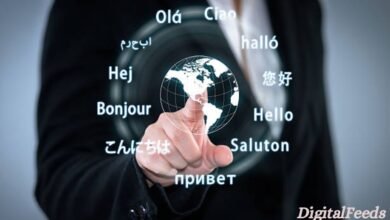
Käätjä, a term often associated with the process of translation, encompasses a broad spectrum of activities and tools aimed at facilitating cross-linguistic communication. Originating from ancient linguistic practices, käätjä has evolved significantly, integrating advanced technologies like artificial intelligence and machine learning to enhance its efficiency and accuracy. This article explores the multifaceted nature of käätjä, its historical roots, technological advancements, and its profound impact on cultural diversity and communication.
Table of Contents
ToggleOrigins of Käätjä
The concept of käätjä can be traced back to the earliest human civilizations where the need for effective communication between different cultures was paramount. The term itself is believed to have derived from the Old Norse word “kætja,” meaning to interpret or explain, or from the Latin “caetus,” which referred to an assembly for sharing and translating ideas. These ancient roots highlight the longstanding human quest for understanding and sharing knowledge across linguistic barriers.
The Evolution of Käätjä
Over the centuries, käätjä has undergone remarkable transformations. In the past, translation was a labor-intensive process relying heavily on human translators’ skills and cultural knowledge. However, with the advent of technology, especially artificial intelligence, käätjä has become more sophisticated. Modern käätjä tools leverage machine learning algorithms to process and translate large volumes of text quickly and accurately. These advancements have made translation more accessible and reliable, enabling seamless global communication.
Technological Advancements in Käätjä
The integration of AI in käätjä has revolutionized the field of translation. Machine learning models, trained on vast datasets, can now handle complex linguistic structures, idioms, and contextual nuances. This technological leap has improved the quality and speed of translations, making it possible to translate entire documents or conversations in real time. The development of mobile applications and APIs further extends käätjä’s reach, allowing users to access translation services on-the-go and integrate them into various platforms.
Impact on Cultural Diversity
Käätjä plays a crucial role in promoting cultural diversity by breaking down language barriers. It enables the sharing of stories, traditions, and knowledge across different linguistic communities, fostering a greater understanding and appreciation of diverse cultures. This capability is particularly valuable in a globalized world where cross-cultural interactions are commonplace. By facilitating communication, käätjä helps preserve linguistic heritage and promotes inclusivity.
Ethical Considerations in Käätjä
As with any technology, the use of käätjä comes with ethical considerations. Ensuring accuracy in translations is paramount, especially in contexts where precision is critical, such as legal, medical, or diplomatic communications. Additionally, maintaining user privacy and data security is essential to prevent misuse of sensitive information. Addressing these ethical issues requires a balanced approach that combines technological innovation with human oversight.
The Future of Käätjä
The future of käätjä is poised to witness even more exciting developments. With ongoing advancements in AI, we can expect translation tools to become more intuitive and capable of handling increasingly complex tasks. Real-time translation, augmented with cultural context and emotional nuance, may become the norm, further enhancing global communication. However, the human element will continue to play a vital role in ensuring that translations respect cultural subtleties and ethical standards.
Applications of Käätjä in Various Sectors
Käätjä finds applications across multiple sectors. In business, it facilitates international trade by enabling clear communication between partners, clients, and stakeholders. In education, it provides students with access to a wealth of knowledge in different languages, promoting global learning. Healthcare professionals use käätjä to communicate with patients who speak different languages, ensuring accurate diagnosis and treatment. The versatility of käätjä makes it an indispensable tool in our interconnected world.
Challenges and Limitations
Despite its many advantages, käätjä faces several challenges. One of the primary limitations is the difficulty in translating idiomatic expressions and culturally specific references accurately. These nuances often require a deep understanding of the source and target cultures, which automated systems may lack. Additionally, while AI-driven translation tools are continually improving, they are not infallible and can sometimes produce errors that require human correction.
Conclusion
Käätjä represents a significant advancement in the field of translation, bridging cultural and linguistic gaps to facilitate better global communication. Its evolution from ancient interpretative practices to sophisticated AI-driven tools underscores the importance of technological innovation in enhancing human connectivity. As we move forward, the integration of ethical considerations and human oversight will be crucial in ensuring that käätjä continues to serve as a reliable and culturally sensitive tool for translation.
In summary, käätjä is more than just a translation tool; it is a bridge that connects diverse cultures and fosters global understanding. As technology continues to evolve, so too will the capabilities and applications of käätjä, paving the way for a more interconnected and inclusive world.





